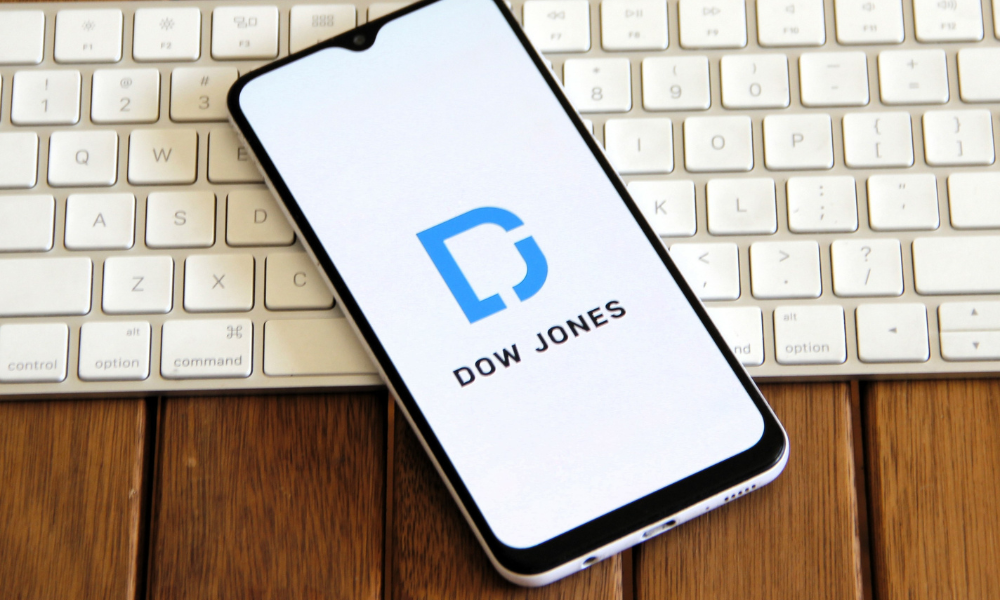

US assets are suffering the worst of the pain from President Trump’s tariff announcement, but global stocks are feeling the pressure.
Futures stats suggest the Dow Jones is set to open more than 1,000 points (2.4%) lower Thursday with the S&P 500 and Nasdaq futures down around 3%.
Among the pre-market movers are Nike (down more than 8% as of 5.30am ET), Robinhood (-7%), and Apple (-7%), along with retailers who rely on low-cost goods such as Five Below (-14%) and Dollar Tree (-11%).
Bloomberg’s Dollar Spot Index dropped as much as 1% to a five-month low with global currencies gaining; the euro was up 1% as was the yen, with the pound up 0.8%. Gold hit a new high and US 10-year Treasury yields dropped to a five-month low towards the 4% mark.
“There’s clearly a tolerance for pain on the part of the administration in pursuit of trade goals that are not necessarily entirely economic in nature,” Ross Mayfield, Baird investment strategist told CNBC. “At this point I’m still in the camp that we’re not on the doorstep of a recession, but maybe a slowdown or growth scare. Non-recession sell-offs tend to be shorter and milder than the recessionary ones.”
The tariffs which range from a base level 10% through to 50% for what the president called the “worst offenders” in unfair trade practices with the US over many decades. The new tariffs are in addition to existing ones, meaning countries such as China (with an existing 20% tariff + a new 34%) will be sharply impacted.
But Wall Street analysts remain bullish on Chinese and Hong Kong stocks, due to government support and diverse export markets. Nicholas Chui, a fund manager at Franklin Templeton, said China represents the “largest opportunity set for investors.” UBS and JPMorgan also showed optimism for China’s equities.
The new levies are also on top of auto tariffs of 25% and those already announced on steel and aluminum. Canada and Mexico were excluded from the new wave of tariffs having backed down on a large chunk of tariffs last month and both Canadian and Mexican futures were higher early Thursday.
“Eye-watering tariffs on a country-by-country basis scream 'negotiation tactic,' which will keep markets on edge for the foreseeable future,” Adam Hetts, Portfolio Manager and Global Head of Multi-Asset at Janus Henderson Investors told InvestmentNews. “Fortunately, this means there's substantial room for lower tariffs from here, albeit with a 10% baseline in place. We've seen the administration have a surprisingly high tolerance for market pain, now the big question is how much tolerance it has for true economic pain as negotiations unfold.”
Globally, the Nikkei 225 index was down almost 3% as of 5.30am ET, the Hang Seng was down 1.5%, and the Stoxx600 was down 1.5%.

The leadership changes coming in June, which also include wealth management and digital unit heads, come as the firm pushes to offer more comprehensive services.

Strategist sees relatively little risk of the university losing its tax-exempt status, which could pose opportunity for investors with a "longer time horizon."

As the next generation of investors take their turn, advisors have to strike a fine balance between embracing new technology and building human connections.

IFG works with 550 producing advisors and generates about $325 million in annual revenue, said Dave Fischer, the company's co-founder and chief marketing officer.

Five new RIAs are joining the industry coalition promoting firm-level impact across workforce, client, community and environmental goals.
RIAs face rising regulatory pressure in 2025. Forward-looking firms are responding with embedded technology, not more paperwork.
As inheritances are set to reshape client portfolios and next-gen heirs demand digital-first experiences, firms are retooling their wealth tech stacks and succession models in real time.
